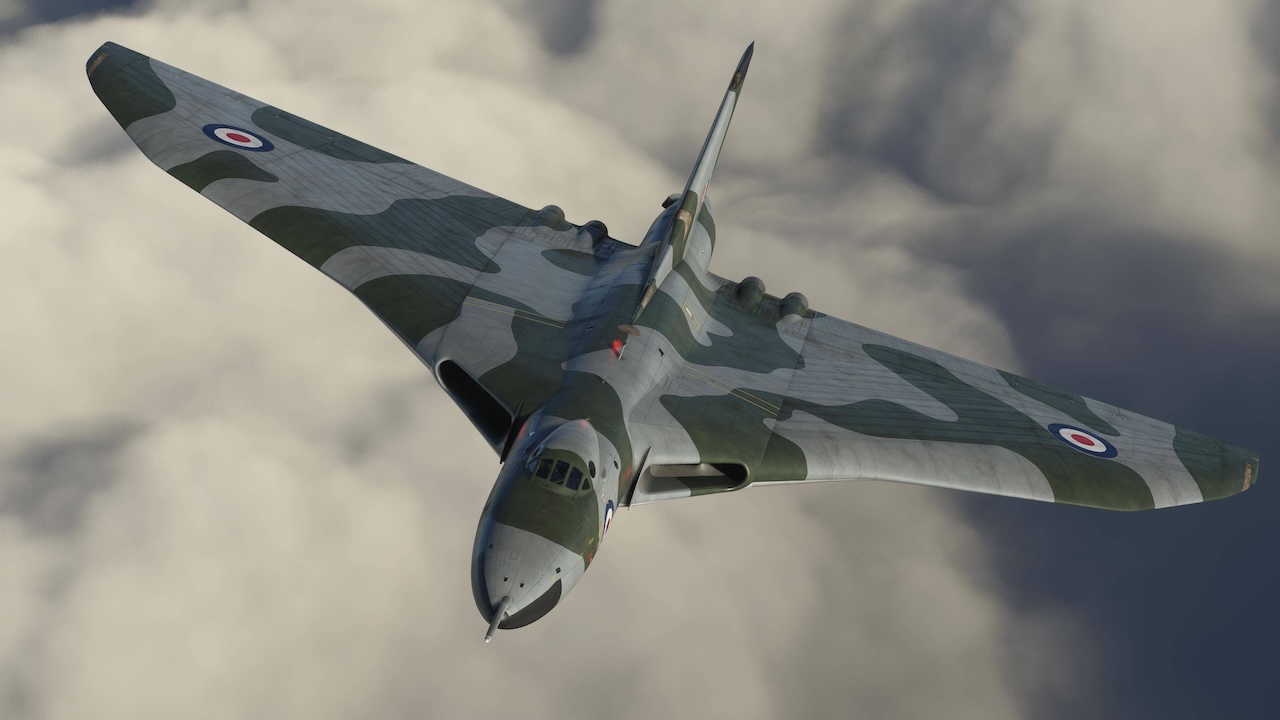– Additional model LODs added for improved performance
– Swapped Aera GPS for G3X Touch GPS, providing additional functionality, including:
– A high-resolution map with touch screen controls
– Autopilot coupling
– Manual flight plan entry, including support for editing flight plans, performing Direct-Tos, and selecting approaches
– Flight plan import from MSFS main menu and SimBrief
– Navigraph Charts support
– Split PFD/ND option
– Terrain and weather radars
– And more!
– Added new GPS cameras for quickly toggling a zoomed-in view of the GPS unit (including hidden clickspot along right bezel of GPS housing)
– Fixed altimeter mode state when loading the aircraft on the runway
– Fixed standby horizon caging state when loading the aircraft on the runway
– Improved engine fuel flow (fuel flow now slightly reduced during cruise)
The aircraft has been modelled to an exceptional level of detail and features stunning 8k textures, with paint schemes covering its time in RAF service, realistic payloads (including Blue Steel, 1,000 lb bombs and bomb bay tanks) and custom ground equipment. Realistic animations include dynamic wing-flex, all passenger, service and cargo doors, and the distinctive lift-dumpers and tail-mounted airbrake.
The Captain and Co-Pilot positions in the cockpit are modelled with hundreds of functional switches, knobs and controls. A selection of rear crew panels are also modelled. The aircraft features complex custom-coded systems based on real-world manuals, including electrical, fuel and engine systems, and TACAN and VOR navigation.
The aircraft are brought to life with wear and tear based on extensive reference photos, immersive dynamic cockpit and exterior lighting and 3D Wwise sounds.
The Vulcan B Mk2 is an iconic, four-engine, delta-wing strategic bomber which saw service in the UK during the Cold War. XM655, on which this product is based, was the third-from-last Vulcan to be produced for the Royal Air Force. It was delivered in 1964 and saw service as part of the UK’s nuclear deterrent force throughout the 60s and 70s. It is now being preserved by a team of volunteers at Wellesbourne Airfield.
Following the Falklands War, six Avro Vulcan B Mk2s were converted for air-to-air refuelling as an interim solution prior to the delivery of VC10 and Tristar tanker aircraft that were due to replace the aging Victor tankers. This conversion consisted of the addition of a Hose Drum Unit (HDU) mounted in the tail cone, and three bomb-bay drum tanks. The K.2 variants served with 50 Squadron (RAF Waddington) from 1982 to 1984.
In 1973 nine Avro Vulcan B Mk2s were converted for Maritime Radar Reconnaissance (MRR). The MRR variants flew patrols around the coast of the UK, primarily operating at high level and using the radar to monitor shipping but also flying at low level for visual identification and inspection. They had a secondary role carrying out air sampling, flying through airbourne contamination following nuclear tests and using air sampling pods mounted under each wing to collect samples for analysis. The MRR variants served with 27 Squadron (RAF Scampton) from 1973 to 1982, at which point the Nimrod took over these duties.

